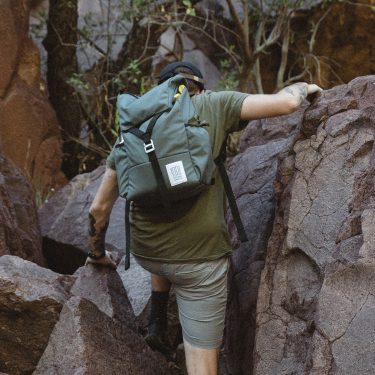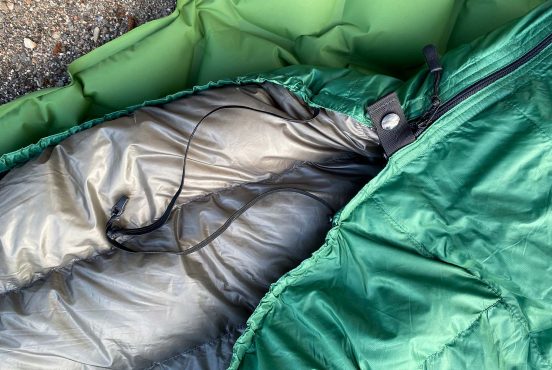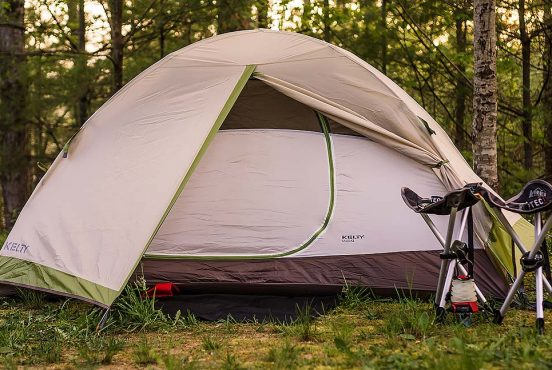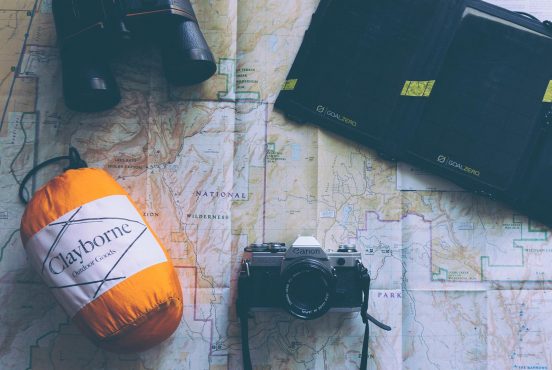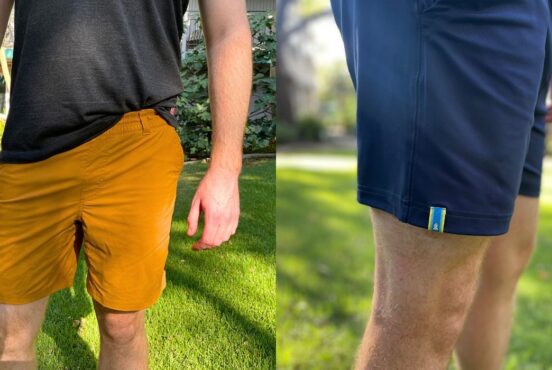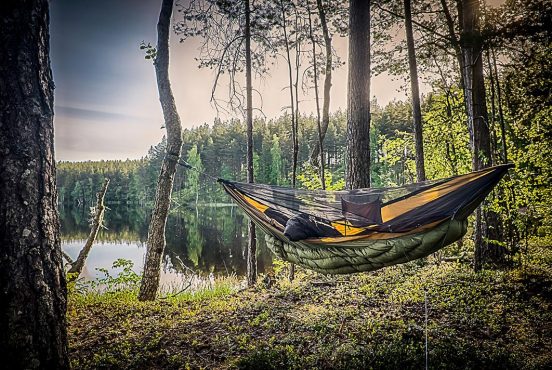Tent manufacturers often list multiple weight points to highlight the versatility of their products, especially when the tent is marketed as a lightweight or ultralight tent.
Packed weight and trail weight are the most common, though you may come across terms like minimum weight, max weight, fast-pack weight, and flyweight. Unfortunately, there are no industry standards for what to include in each weight class, so the listings may be misleading or difficult to compare between manufacturers.
Packed Weight
Packed weight — aka packaged weight or max weight — refers to the total weight of the entire package at the time of purchase. This includes the stuff sack, tent body, rain fly, poles, stakes, guy lines, and other accessories like a patch kit or pole repair sleeve. Unless the tent comes with a footprint (most tents don’t), assume that you’ll need to purchase and pack a footprint separately.
Simply put, packed weight is the most your tent will weigh without any add-ons. While trail weight and fast-pack weight are both up to interpretation, there’s no manipulating packed weight: if it’s in the bag, it’s part of the calculation. As such, it’s best to reference the packed weight when comparing tents from multiple manufacturers in order to compare apples to apples.
Unless you’re an ounce-counting backpacker, packed weight is the most accurate assessment of how much your tent will weigh when it’s loaded in your backpack. You can subtract one or two ounces to account for extra stakes, patch kits, and other unnecessary accessories, but it’s safe to say that the packed weight is a fair representation of the tent’s true weight.
Trail Weight
Trail weight — or minimum weight — is how much the tent weighs without the non-essential components. At a minimum, this should include the poles, tent body, and rain fly. Some manufacturers include stakes and guy lines when calculating trail weight. However, you should assume these aren’t included in the trail weight unless they’re specifically listed on the packaging.
Understanding the trail weight is helpful, but it can be misleading. You’ll need stakes to pitch your tent, so leaving stakes out of the calculation is unrealistic unless you plan to purchase ultralight stakes on your own and want to weigh those separately.
Most people prefer to use the stuff sack rather than cramming the tent into their backpack, and you’ll need guy lines to secure the rain fly when the weather turns wet or windy. Cutting these may save you 8-10 ounces, but these features are often worth the extra burden for the peace of mind knowing you’re fully prepared for whatever mother nature throws your way.
Fast-pack Weight
Fast-pack weight — or flyweight — is the absolute minimum, bare-bones weight for a minimalist shelter using only the rain fly. This one is particularly hard to gauge, as some manufacturers include the guy lines that you’ll need to secure the rain fly, while others just include the rain fly.
In any case, you’ll need to purchase a footprint separately for this type of setup to work, so it’s a notoriously misleading figure as the average footprint adds an extra 6-12 ounces.
That said, a fast-pack setup is an ideal shelter for long-distance backpacking adventures where every ounce counts, so it’s an important figure to include for experienced backpackers. It also helps to break down the weight of the rain fly versus the other components if you plan to split the tent with several group members.
Assuming one person takes the fly, another takes the tent body, and a third backpacker takes the accessories, you can use the difference between the trail weight and the fast-pack weight to estimate the weight of the tent’s body, rain fly, and accessories.
Which Weight is Most Accurate?
When comparing tents from different manufacturers, be sure to reference the packed weight to ensure you’re comparing apples to apples. Assume that you can drop a few ounces by removing the repair kit, extra stakes, and the stuff sack, though you won’t know what’s truly essential until you take the tent out on your first trip.
Trail weights and fast-pack weights are more meaningful when you’re an experienced backpacker, but they’re still difficult to compare between manufacturers. Beginning backpackers can use these weights to get an idea of a tent’s lightweight potential, but you’ll need to do some digging to understand which components are included in the calculation.
Factors to Consider When Purchasing a Tent
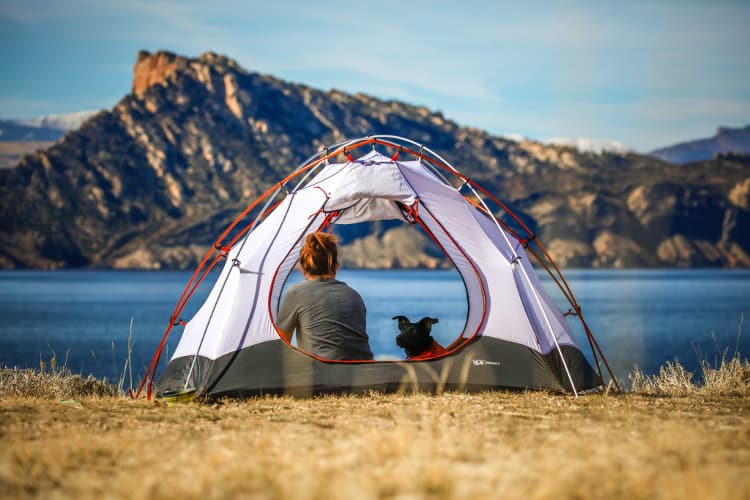
Weight is an important consideration for backpackers, but it shouldn’t be the only factor in making your decision. As you’re shopping around for the best solution for your unique needs, you’ll also need to consider capacity, seasonality, and living space. You’ll also need to balance these with finding a tent on your budget (tip: it’s possible to get a backpacking tent under $100).
Capacity
Backpacking tents generally sleep 1 to 4 campers, and there’s not a whole lot of wiggle room for the listed number of occupants. Trust us — don’t try to squeeze 3 people into a 2-person tent unless you want this to be your last trip together. Larger backpackers may need to go up a size to ensure there’s enough space for everyone, so consider upgrading tent capacity if you or a group member needs floor space.
Seasonality
Three-season backpacking tents are ideal for fairweather trips during the spring, summer, and fall. They usually include mesh walls for optimal airflow, and a rain fly to attach when it’s rainy or windy. Four-season tents are designed to provide additional protection from heavy snow, ice, hail, and harsh winds.
They’re often 2 to 3 times heavier than 3-season tents, but they’re essential when backpacking in extreme weather conditions. The name is a little misleading, though, as a 4-season tent may be too hot and stuffy during warmer months. If you go backpacking year-round, you may need to purchase one of each.
For a full discussion of seasonal tents, check out our article on 3-Season Tents vs 4-Season Tents.
Living Space
A stand-up backpacking tent typically offers 40” to 48” of headspace. Alternatively, you can opt for a one-person bivy sack, bug shelter, or hammock tent with 24” to 30” of headspace. These three are ideal for minimalist backpackers who need to cut weight, but you’ll need to be comfortable sleeping in a coffin-sized shelter.
Weighing Your Options
The biggest takeaway here: take any weight listed in a tent’s specs with a grain of salt. A little online research into reviews and tutorial videos can clue you in on how a particular tent operates, but you won’t know the true trail weight until you get it home. Your best bet is to buy a tent from a retailer with good return policy in case the setup weighs more than you bargained for.
Seen in: Backpacking, Bags & Backpacks, Gear

